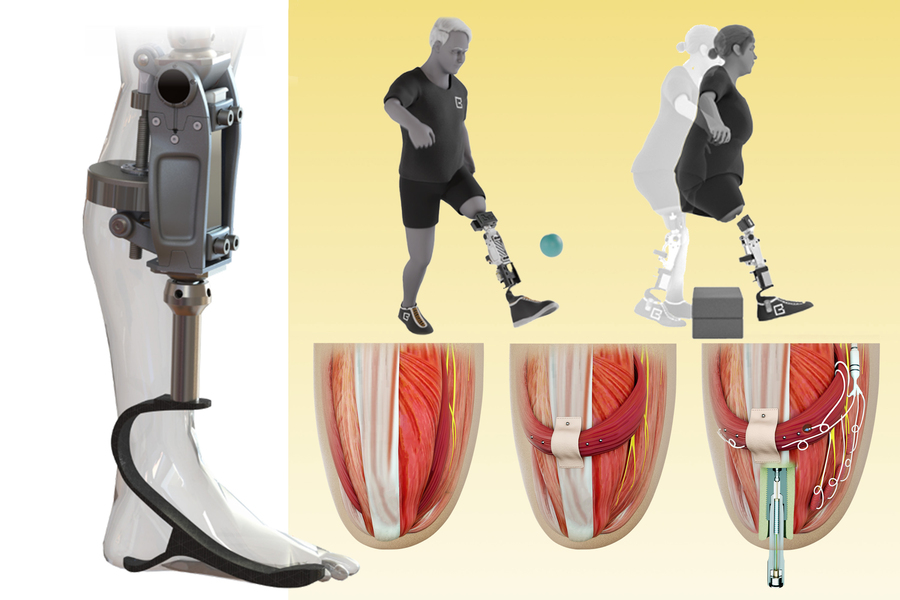Bionic Knee That Integrates with Human Tissue Restores Natural Movement

Image Credit: Courtesy of the researchers; MIT News
MIT researchers have unveiled a groundbreaking bionic knee system designed to restore natural movement for individuals with above-the-knee amputations. Unlike conventional prostheses that rely on a socket to hold the artificial limb in place, this new system is integrated directly into the user’s muscle and bone tissue.
The result is a prosthesis that offers significantly improved mobility, control, and a deeper sense of connection to the limb. The findings, which mark a major leap forward in prosthetic design, appear in today’s issue of Science, with lead authorship by Tony Shu PhD.
In a small clinical study, participants outfitted with the new bionic knee reported substantial improvements in navigating everyday challenges such as walking faster, climbing stairs, and avoiding obstacles. More notably, users described the prosthetic as feeling more like a natural part of their body compared to traditional devices — a sense known as “prosthetic embodiment.”
“A prosthesis that’s tissue-integrated — anchored to the bone and directly controlled by the nervous system — is not merely a lifeless, separate device, but rather a system that is carefully integrated into human physiology, offering a greater level of prosthetic embodiment. It’s not simply a tool that the human employs, but rather an integral part of self,” said Hugh Herr, senior author of the study and professor at MIT’s Media Lab, where he co-directs the K. Lisa Yang Center for Bionics.






